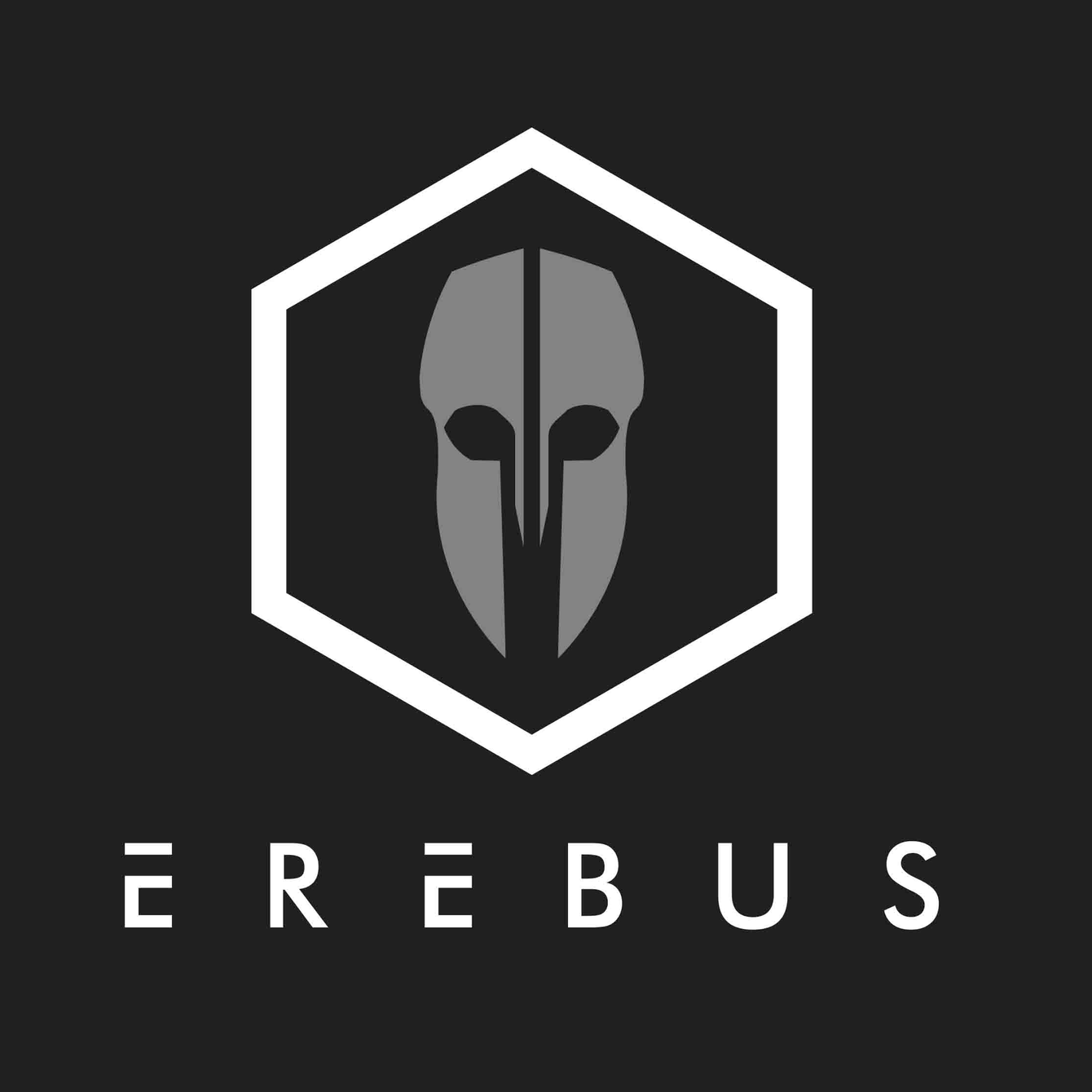
In another instalment of our interview series, we got in touch with Roberta Grillo, one of the masterminds behind the emerging footwear label Nihomano.
Nihomano focuses on their handmade Opanca Sneaker roots and explore each season through new constructions and treatments. they prefer not to give a name or a label to the collections, but rather consider them new expressions of their mother concept. Nihomano strongly believes in being coherent with our concept instead of following the seasonal trends. They aim to build a product independent from seasons and collections; a strongly characterised and recognisable product.
Each Nihomano sneaker is handmade in Italy without the use of any machines, the sign of a true artisan! Read our interview with Roberta from Nihomano below.

Erebus: What inspired you to get into the footwear game? What motivates you?
Nihomano: We have been working in footwear for over 16 years, ranging from sport to high-end lifestyle shoes. During this period we have worked with any kind of shoe-making realities, from the small backyard labs up to huge factories, but we have always been fascinated by the artisan creation process: how you can transform your ideas into artifacts with the few tools at your disposal.
Nihomano project has been a cathexis: once recognized that, we simply went down the road - right or wrong clearly did not matter.
E: How would you describe Nihomano to someone who has not yet experienced it?
N: Nihomano embraces the Japanese philosophy of wabi-sabi centered on the acceptance of transience and imperfection. Japanese aesthetic values marks of wear by the use of an object and encompasses the concept of non-attachment, the acceptance of change and fate as aspects of human life. Being handmade, all our products inevitably suffer from the signs of the artisan process. On top of these there are the dyeing treatments - some of them are quite unorthodox - leaving the shoes in a state that is more akin to used than new. The vicissitudes of existence over time, to which all humans are susceptible, could not be clearer than in the scratches, the hammer blows and the abrasions to which these shoes too are subject. A subsequent restoration process is aimed to give the shoes the intended look, highlighting all these marks as simply events in the life of an object rather than defects.
E: What would you say is the biggest inspiration in your design process? How is this reflected in your designs?
N: We love hybrids. Basically they are a celebration of evolution. You can create pretty anything if you only keep on mixing existing things up. Nature do this continuously, producing complex shapes from simpler ones combined in a way that offers the least resistance to change. Clearly not every combination is winning - this is part of the game - and our job is to select and focus only on those having some chance to survive. We like to think to our design approach as Darwinist: we put at stake different skills and points of views, and we let only the better ideas to survive. Most of the times this is a subtractive process, as it tends to converge to the least common denominator of our different points of view.
All the above is reflected by our products as every detail is structural - for a reason or another - to the product itself. In other words, each piece, stitch or nail on our shoes is there for a good reason; if we change something it is just to improve the product, not to refresh the style.
E:How much time to you spend on your designs? How do you feel about the accelerated pace of the fashion industry?
N: A lot. Our development time-frames span from months to years, depending on project. This also helps us to stay away from the usual fashion dynamics.
E: What responsibility do you feel you, as a fashion designer have to protect the environment?
N: Durability. We always design our products in a long lasting perspective as in our opinion resource abuse is far more dangerous than resource use. Repairability is another common keyword in our brainstorming sessions, a though one tough...
E: What would you consider your signature? Do you have any unique techniques?
N: Opanca construction is an ancient technique that allows to mould the vero cuoio by hand, only with the use of a hammer and some nails. Opanca has been traditionally used to shape the bottom of the shoes but we think to have used it in a new perspective. Shaping part of the upper of the shoes with opancas allowed us to revert the shoe construction rules, avoiding internal reinforcements and transforming the shoe into a soft leather sock.
E: What is your favourite piece(s) from your collections? What are your favourite textiles to work with?
N: We are literally immersed in shoes. Not all of our prototypes will be ever seen in the range, yet we love and use most of them regularly. We place in collection only the prototypes we like most, so hardly we could ever find a favorite one.
We use just two materials: white real leather (vero cuoio) and white leather. These are our canvas and we mold it with different shapes, treatments and colors.
E: Who is your audience? Who do you have in mind whilst designing your collections?
N: We ourselves. In nihomano we do only design things we like and want to wear. We do completely disregard the trends of the moment. As a result, we have a pretty heterogeneous audience.
E: Who would be your dream brand ambassador?
N: Anyone who understands and loves our shoes. Anyone who tries them on and cannot avoid using them day by day. Just like us.
E: In your opinion, what has been your biggest success so far?
N: Most of our products are unique, something that did not exist before and this is more than enough for us.
E: Of what achievement or recognition are you most proud in your career?
N: Some of our customers contacted us just to say "thank you!" What’s else..
E: What do you feel is necessary to “breakthrough” into the industry?
N: Strong skills, a bright concept, a lot of dedication, a bit of luck and - least but not last - a big pile of money stacks in order to be free to follow your path without having to curb your ideas to the passing trends.
E: Where would you like to see Nihomano in 10 years?
N: Exactly where it stays: on the shoulders of giants.
E: How do you feel your brand stands out in such a saturated industry?
N: Honestly that's not our business. Most of the companies we work/worked for were so deeply involved into brand positioning, customer identity, seasons, etc. that we developed a natural indifference to these buzzwords. Our business approach is quite straightforward: we do what we like to do with no regrets. Clearly it would be great if our concepts have the chance to stand-out in the industry, as it would mean we could push further on our product line. Apart from that, we don’t care.
E: What advice would you give someone thinking of starting a career in the fashion industry?
N: Be open-minded, have no compromises and never give up!
E: What is the best piece of advice you have received?
N: This one is from a cunning guy we met during our first fashion week in Paris: do not rush, let them wait...
E: What’s next for Nihomano?
N: Next has already been done (some) time ago :-)
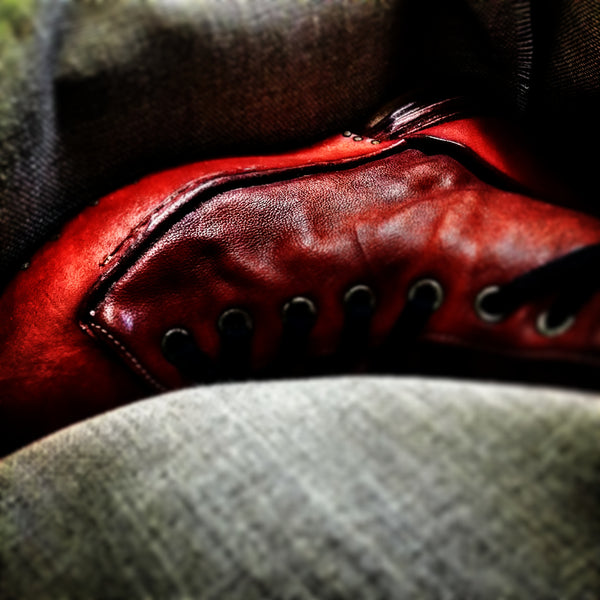

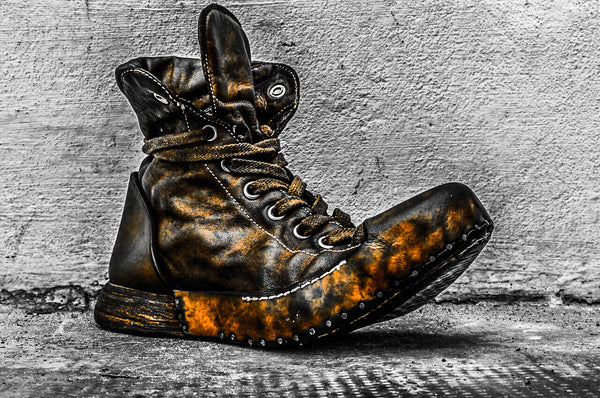
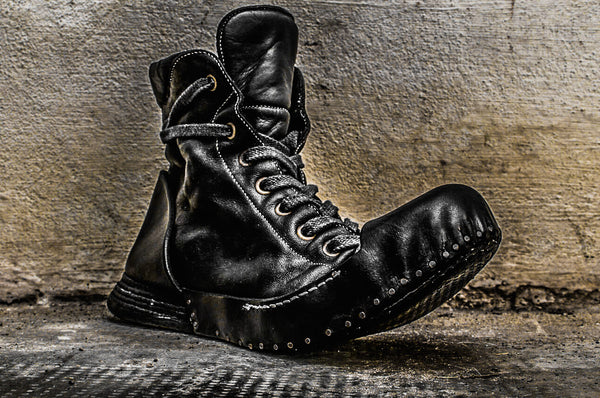
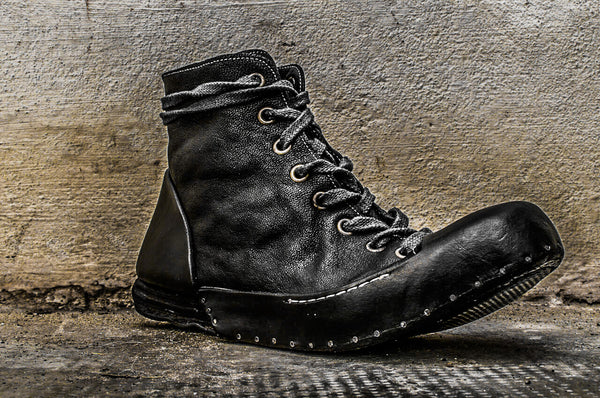
You can keep up to date on Nihomano by liking them on Facebook or following them on Instagram.
